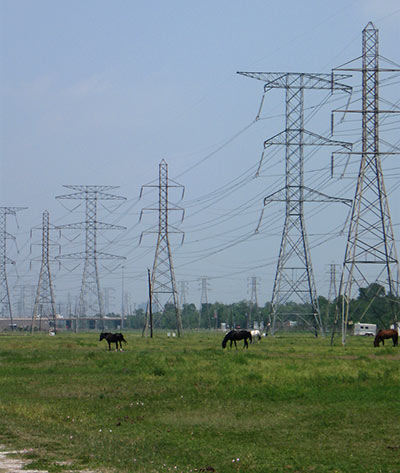
Got an answer to either of these reader questions? Or just want to be a sleuth for Swamplot? Here’s your chance! Add your report in a comment, or send a note to our tipline.
- Willowbend: Reader Robert Kimberly has been trying to find out what the story is behind the horses grazing under the power lines west of Stella Link below the South Loop:
This vast green area is home to a collection of horses, as well as stables and maybe a riding paddock. But the fences on the north end (W. Bellfort) and south end (Willowbend) are unlabeled and no amount of Google-Fu gets me any closer to the answer.
- Riverside Terrace: A number of readers have been asking about this well-watched house on Wichita St. between 288 and Dowling — usually in phrases like:
What’s going on here???
Looks like a little of this:
***
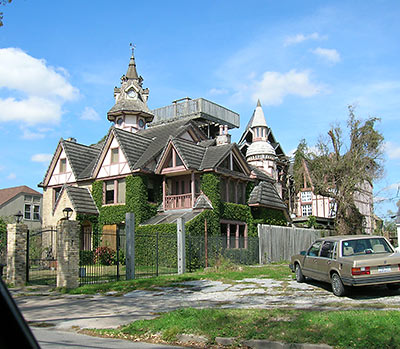
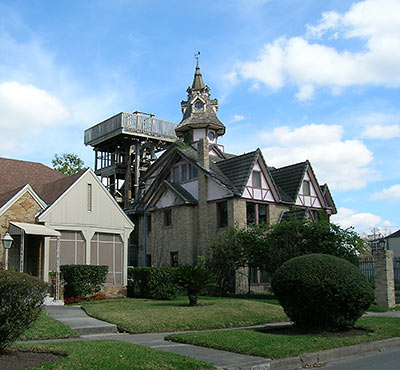
Go ahead and tell ’em, Wichita house fans!
Photos: Mr. Kimberly (horses; license); Swamplot inbox (Wichita house)



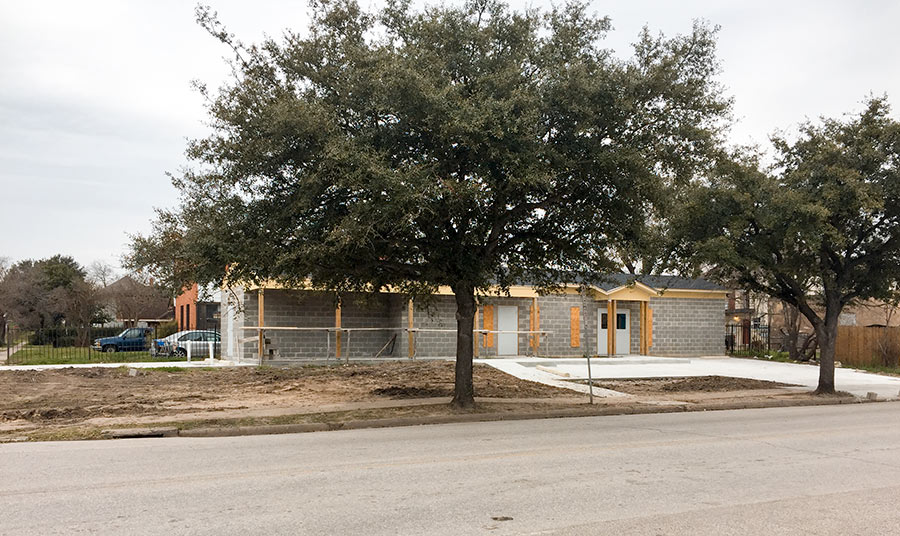
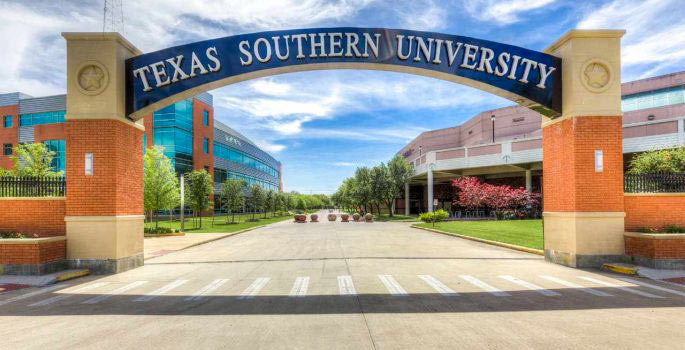
Riverside Terrace .. now I know where I’m going trick or treating this Halloween!
I’ve driven past that house a few times in awe. I’d love to know the story too!
Don’t know about the electro-horses, but the Wichita Street house was the subject of a Houston Press article, which I have to post a link to from time to time when the question resurfaces:
http://www.houstonpress.com/2001-03-29/news/withering-heights/
The horses are the remaining tenants from the days when HL&P issued agricultural leases in order to get property tax exemptions. The horses’ owner is a retired employee who made a *very* long lease. I think that HL&P lost the tax breaks in the mid nineties and quit renewing leases. It was good news for the school district which saw an infusion of cash, but bad news for everyday city life; I miss the days when I’d see riders taking their horses for Sunday strolls, and I liked to moo at the cows when I crossed an urban train track.
To clarify – HL&P an exemption, per say, but a very advantageous value swap. At the time, land for agricultural use could be taxed based on the value of its crop or stock rather than the value of the land itself. So throwing a farmer or rancher a cheap lease to put a piddly number of cattle on top of empty land was a common corporate practice. The law started tightening to exclude large corporations such as HL&P from agriculture breaks around 1993, from what I can glean in the Houston Chronicle’s archives. I don’t know if agricultural land is still taxed in the same way these days.
Thanks, Sihaya, for that explanation. I do remember seeing cows and horses pastured in surprisingly “urban” areas back in the 80s and 90s.
Maybe a vacant lot on West Gray, near where the old doughnut shop and later that River Oaks Cineplex was? Or am I crazy?
Thanks, Marmer — I knew there had to be a human-interest story behind this place. I wonder how Charlie is doing these days, and (since the story doesnt mention a family) what will happen to the house after he’s gone. I also wonder if the interior is as interesting as the exterior? It might be time for a follow-up.
During the 60s-70s there were horses all along most HL&P right-of-way and along Buffalo on the West side of town.
The Riverside Terrace subdivision is the best kept secret for real state in town. There are multiple houses like this one with lots of character and charm. Many of them are mansions. Although the neighborhood has been traditionally low income, there are houses that are either being revamped or still well preserved.
ACE,
Welcome. Riverside Terrace is a frequent subject of discussion and certainly no secret to the denizens here. You are absolutely right that there are a lot of interesting houses there. In particularly the mid-century-modern style is well represented. And there are plenty of traditional brick two-story houses, but it is misleading to imply that there is anything else like Charlie Fondow’s spectacular project.
I grew up in the area and have visited those horses (and others, no longer there) many times. Like Sihaya said, these horses were grandfathered in a long time ago, and if you’re looking for a cheap place to put your horse, easements are no longer available. (The pony-loving younger version of me was very disappointed to learn this.)
Horses no longer (maybe never did) qualify a landowner for lower taxes due to an agricultural use in Texas, but having a token number of cows (your own or someone else’s) and other livestock does. According to an article in WSJ from 2007: “Today, Exxon Mobil Corp., one of the most profitable companies in the world, takes advantage of those exemptions by grazing cattle and growing trees around its old oil fields. The appraised value of its agriculturally exempted property in Harris County dropped from $38 million to $1.2 million.”
This house belongs to my brother Charles, he passed away while on a cruise on March 17, 2011. He is greatly missed and loved, Charlie did love his house…. Now we have to sell it….
Sister,
Betty
North Carolina